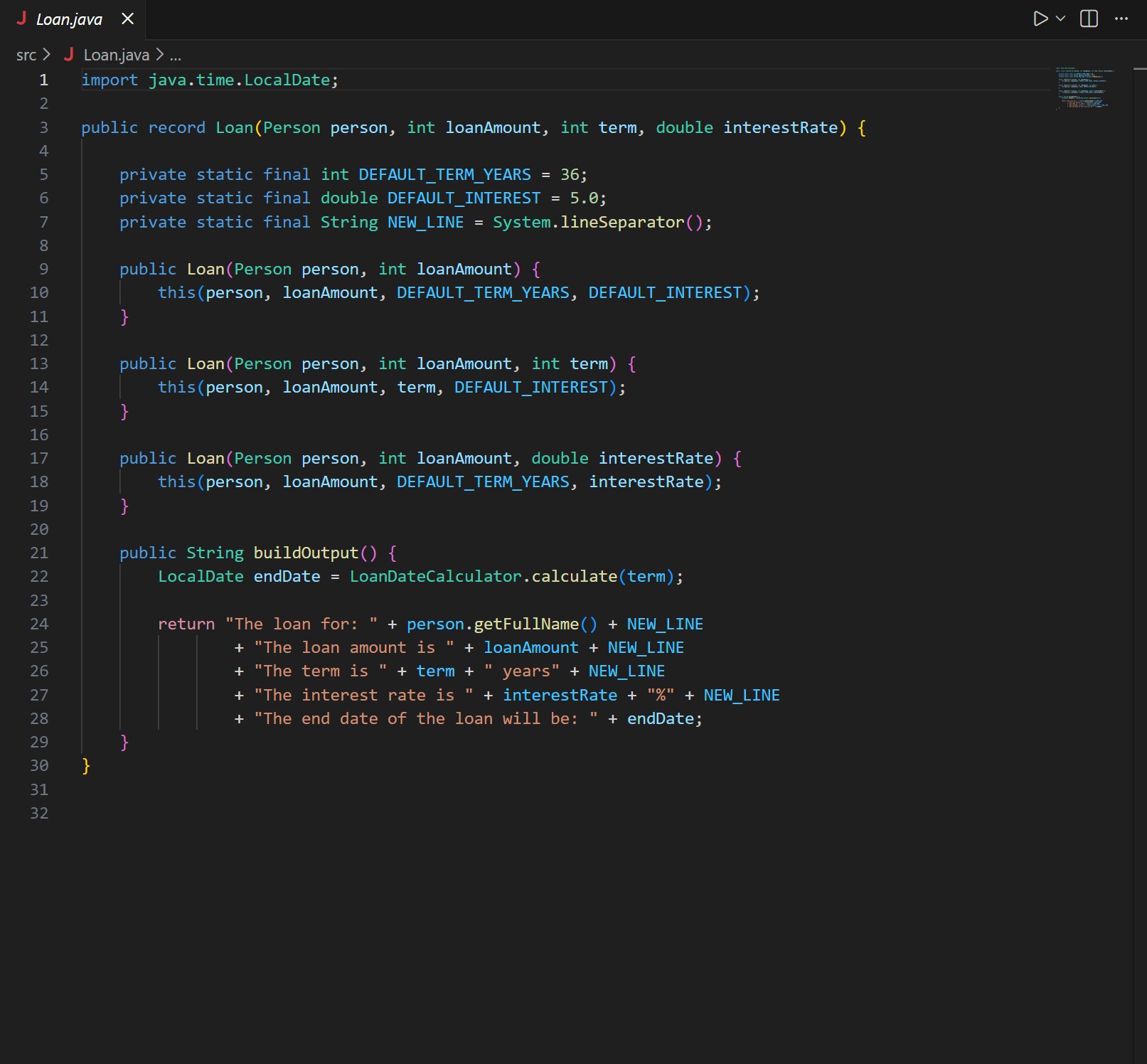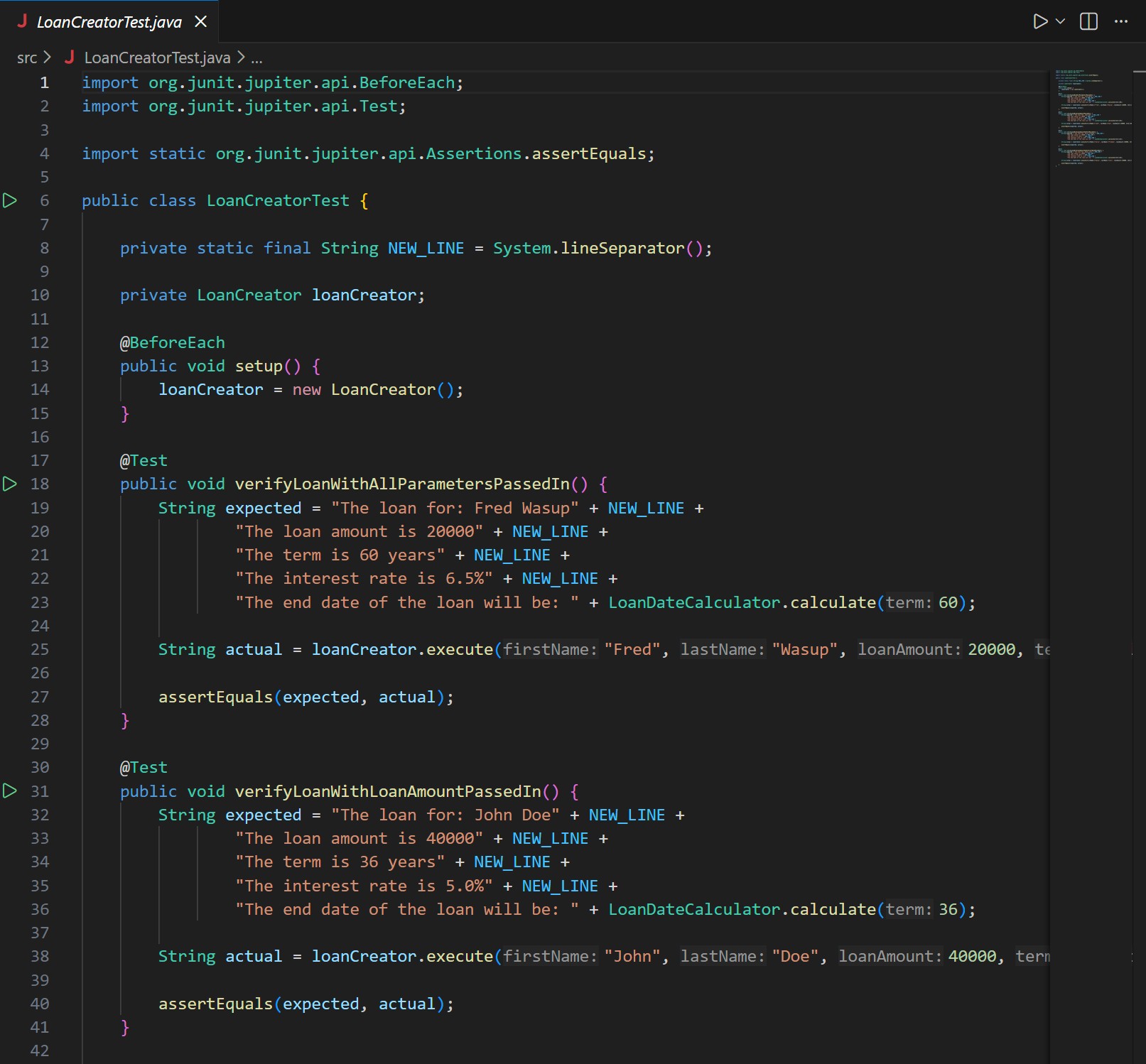Loan Calculator — Loan Summary Builder
A Java console application that builds formatted loan summaries, including borrower name, loan amount, term, interest rate, and a calculated end date using a helper class. A simple test runner validates multiple scenarios.
Screenshots
Loan Class

Represents the core loan data: borrower, amount, term, interest rate, and summary output.
LoanCreator Logic

Handles user inputs and builds the loan summary string, applying defaults when needed.
Test Code

Original JUnit-style tests used to validate output before converting to a standalone runner.
Test Runner Output

Console output showing several loan scenarios being created and verified against expected summaries.
Project Overview
This assignment focused on working with methods, parameters, and formatted output in Java. The program
takes in borrower information and loan details, fills in defaults when some values are missing, and then
produces a readable summary. A helper class, LoanDateCalculator, is used to determine the end
date of the loan based on the term.
The design separates responsibilities so that each class has a clear purpose: one for building the loan, one for calculating dates, and one for testing the logic. This makes the code easier to extend and maintain.
Key Logic (Summary Builder)
A simplified example of how the loan summary string is built:
public class LoanCreator {
public String execute(String firstName, String lastName,
Integer amount, Integer termYears, Double interestRate) {
String borrower = firstName + " " + lastName;
int finalAmount = amount != null ? amount : 20000;
int finalTerm = termYears != null ? termYears : 36;
double finalRate = interestRate != null ? interestRate : 5.0;
String endDate = LoanDateCalculator.calculate(finalTerm);
return "The loan for: " + borrower + "\n" +
"The loan amount is " + finalAmount + "\n" +
"The term is " + finalTerm + " years\n" +
"The interest rate is " + finalRate + "%\n" +
"The end date of the loan will be: " + endDate;
}
}The real project includes more context and validation, but this excerpt shows the core idea: apply defaults when needed, delegate date calculation, and build a predictable summary string.
What I Learned
- How to break down a feature into clear responsibilities across multiple classes.
- How to handle optional parameters by applying sensible default values.
- How to build multi-line formatted strings reliably for comparison in tests.
- How to create a small test harness to verify different input combinations.
Explore the Code
You can review the full implementation, including the date calculator and test runner, on GitHub.